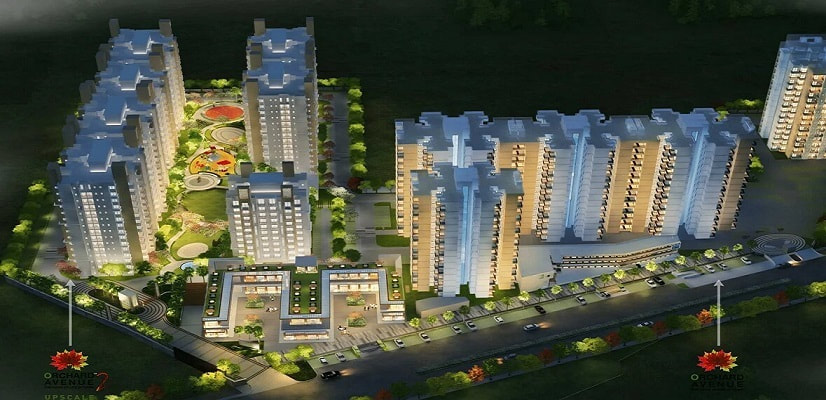The term affordable housing refers to residential housing units that are affordable and reasonably priced for those who fall under economically weaker section or middle-income groups. In a developing country like India, affordable housing is a boon for those who plan to buy a house. Affordable housing can accelerate the growth of fast-increasing Indian real estate market.
If the last five years have indicated something, it is that affordable housing in India has been the biggest contributor to home sales. Whether it’s metro cities like Delhi, Bangalore, Mumbai, or smaller cities like Indore, Bhopal, etc., affordable housing demand is on the rise since the past few years.
With the basic objective of affordable housing remaining the same, sellers and builders are targeting this section of the residential market. Keeping it as a priority, governments are also launching schemes and leaving no stones unturned to meet the goal ‘Housing for all’ by 2022.
If the last five years have indicated something, it is that affordable housing in India has been the biggest contributor to home sales. Whether it’s metro cities like Delhi, Bangalore, Mumbai, or smaller cities like Indore, Bhopal, etc., affordable housing demand is on the rise since the past few years.
With the basic objective of affordable housing remaining the same, sellers and builders are targeting this section of the residential market. Keeping it as a priority, governments are also launching schemes and leaving no stones unturned to meet the goal ‘Housing for all’ by 2022.
Housing for All’ by 2022 or Pradhan Mantri Awas Yojana (PMAY) in India
Launched in 2015 by the government of India which aims to provide 20 million affordable housing units for the low and middle-income group by March 31, 2022. It has two subsets:
Need for affordable housing in India
India, being one of the most populous countries in the world and its population growing at 1.3 per cent per annum, has paucity for housing. As estimated by Economic Times, India has a shortage of nearly 4 crore houses and is constantly increasing by 1 crore houses per year. This estimate highlights the importance of housing in India.
Migration is one of the causes which has made affordable housing all the more essential, affordable homes can cater to the needs of people. Tax relaxation of up to 100 per cent for developers on building affordable housing projects has also given an impetus to build more projects under this scheme, increasing the opportunity for more people to afford their homes.
Advantages of Affordable housing
As mentioned earlier, real estate developers are given incentives in many ways by the government of India, to build more and more affordable housing units. Government is also offering home loans at a low-interest rate with increased subsidies. If you’re working and have an annual income above the criteria set by the government, you can get up to 100% home loan with up to 20 years of payback time. Not only that, but the buyers, who fall under the scheme will also only have to pay just 1% GST on the purchase of a new house.
Future of Affordable Housing
Affordable housing has the potential to expedite the growth of the Indian economy by boosting real estate marketing and infrastructure. It also offers to generate capital investment up to Rs 1-1.25 lakh crore per annum incrementally. Not only that, but it also promises to increase employability by creating 27-34 million jobs and incentivizing the growth of GDP in a significant way. The affordable housing plays a significant role in boosting India’s economic growth. Employment and Housing are two of the major sectors hindering GDP growth. Affordable housing addresses both.
Launched in 2015 by the government of India which aims to provide 20 million affordable housing units for the low and middle-income group by March 31, 2022. It has two subsets:
- Pradhan Mantri Awas Yojana (Urban) (PMAY-U) for urban areas
- Pradhan Mantri Awaas Yojana (Gramin) (PMAY-G and also PMAY-R) for the rural area
Need for affordable housing in India
India, being one of the most populous countries in the world and its population growing at 1.3 per cent per annum, has paucity for housing. As estimated by Economic Times, India has a shortage of nearly 4 crore houses and is constantly increasing by 1 crore houses per year. This estimate highlights the importance of housing in India.
Migration is one of the causes which has made affordable housing all the more essential, affordable homes can cater to the needs of people. Tax relaxation of up to 100 per cent for developers on building affordable housing projects has also given an impetus to build more projects under this scheme, increasing the opportunity for more people to afford their homes.
Advantages of Affordable housing
As mentioned earlier, real estate developers are given incentives in many ways by the government of India, to build more and more affordable housing units. Government is also offering home loans at a low-interest rate with increased subsidies. If you’re working and have an annual income above the criteria set by the government, you can get up to 100% home loan with up to 20 years of payback time. Not only that, but the buyers, who fall under the scheme will also only have to pay just 1% GST on the purchase of a new house.
Future of Affordable Housing
Affordable housing has the potential to expedite the growth of the Indian economy by boosting real estate marketing and infrastructure. It also offers to generate capital investment up to Rs 1-1.25 lakh crore per annum incrementally. Not only that, but it also promises to increase employability by creating 27-34 million jobs and incentivizing the growth of GDP in a significant way. The affordable housing plays a significant role in boosting India’s economic growth. Employment and Housing are two of the major sectors hindering GDP growth. Affordable housing addresses both.


